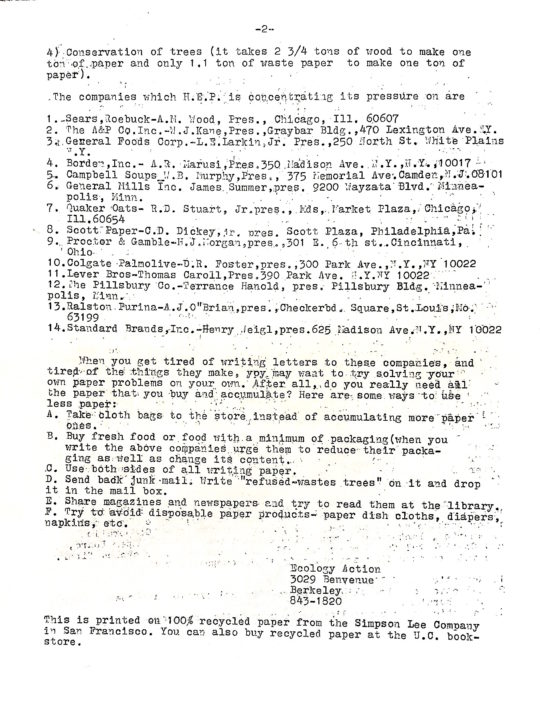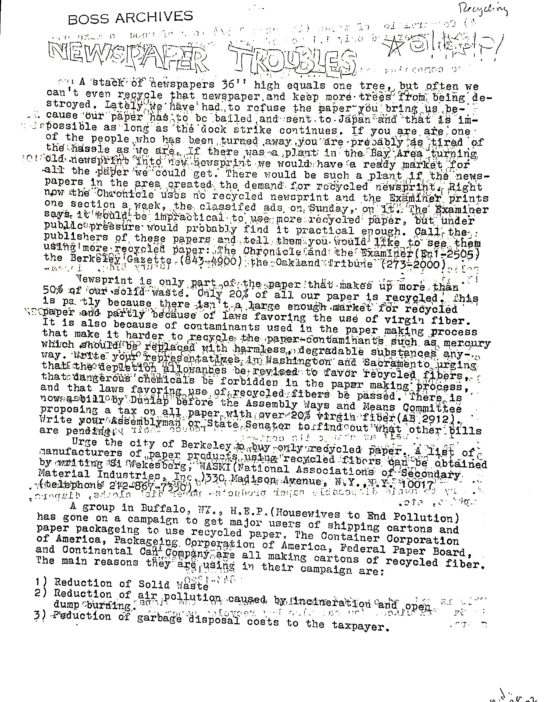Paper accounted for more than 50% of solid waste and newspaper made up a large portion of that, so it makes sense that newspaper was the first resource that recycling efforts went after. Newspaper seemed so obvious and easy to recycle when it was produced and thrown away every day in most households. Newspaper could be recycled, but only if there was a market for it to get made into something useful. Ecology Action, doing their thorough research, identifies the organizations with interests in recycled paper, policies that hinder that process, and officials who can be pressured so that a market for recycled paper processing can expand in the US.
The first paragraph mentions that a dock strike was preventing the transportation of paper to Japan, the primary buyer. This detail suggests the intimate interconnections between recycling and labor rights: who does the labor for recycling? How are they treated? Are fair labor practices folded into the ideology, and practices, of recycling? In this flyer, Ecology Action sidesteps the issue by suggesting a work-around that would allow the continued use of recycled paper, rather than supporting the strikers in a direct manner.
This flyer comes full circle by indicating that the flyer itself is printed on 100% recycled paper. This is another example of Ecology Action’s educational outreach to the public and of its activism by example.
The second page of the flyer is reproduced below.

